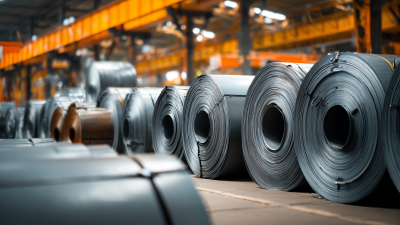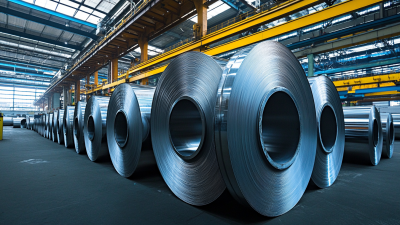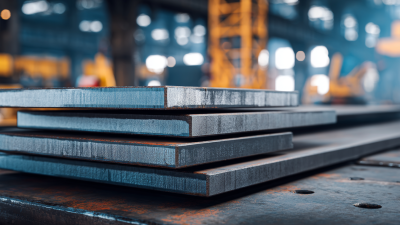In recent years, the steel industry has undergone significant transformations, largely influenced by the increasing demand for high-quality products such as Cold Rolled Coils (CRC).
As one of the key components in the production of various steel applications, CRC has seen a robust growth trajectory, with a market valuation projected to reach approximately $300 billion by 2025, according to industry reports.
The versatility of Cold Rolled Coils, used extensively in automotive manufacturing, construction, and appliances, highlights their essential role in modern production processes.
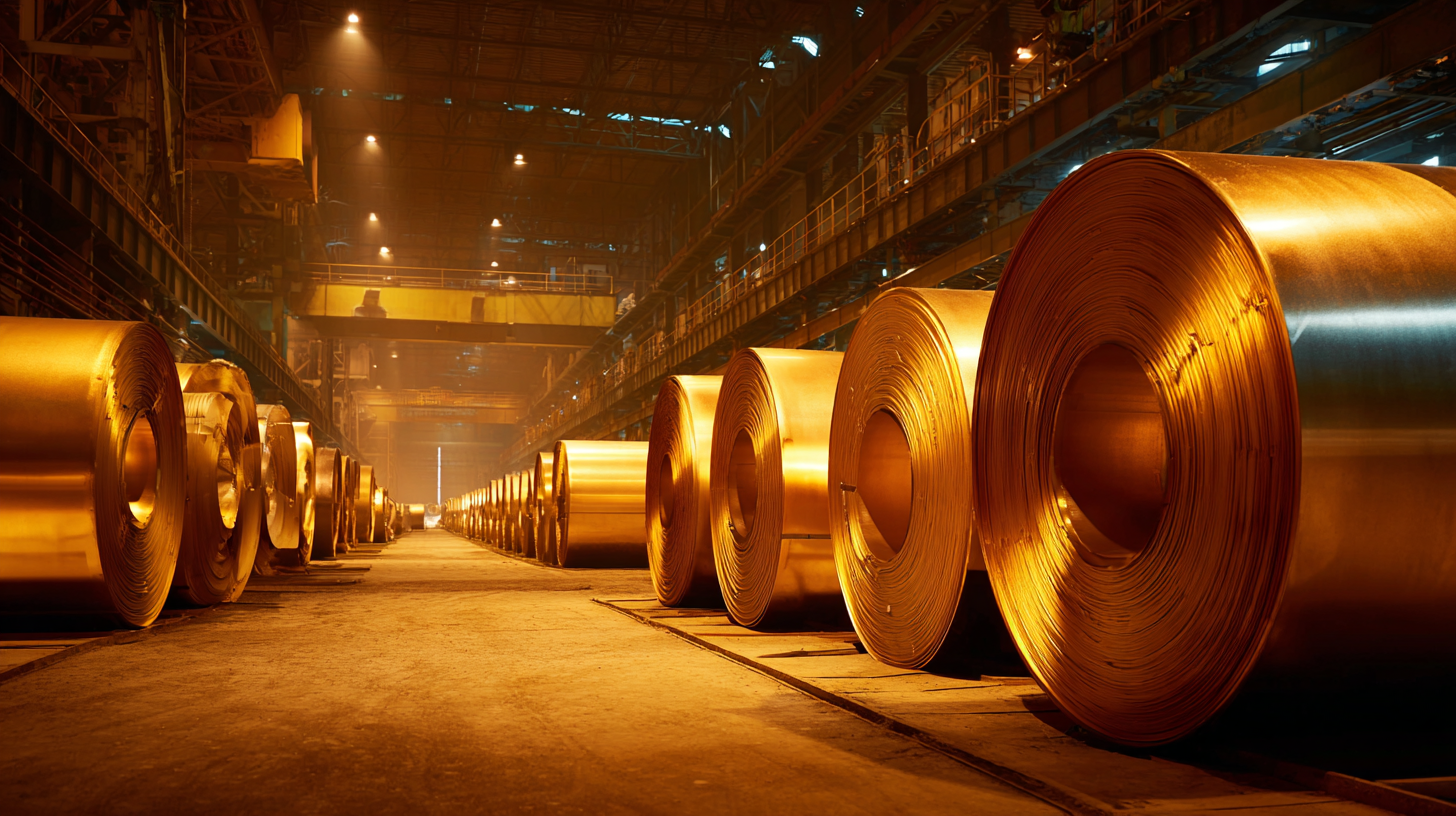 Moreover, the ongoing technological advancements and innovations in the manufacturing techniques of CRC are set to further bolster market efficiency and product quality.
This article aims to delve into the current trends and market data surrounding Cold Rolled Coils, providing insights into their impact on the steel industry and the factors shaping their future.
Moreover, the ongoing technological advancements and innovations in the manufacturing techniques of CRC are set to further bolster market efficiency and product quality.
This article aims to delve into the current trends and market data surrounding Cold Rolled Coils, providing insights into their impact on the steel industry and the factors shaping their future.
The global landscape for cold rolled coil (CRC) production is undergoing significant transformation, influenced by various economic and manufacturing shifts. As projected, the cold rolled coil steel market is expected to grow substantially, from $88.35 billion in 2025 to $134.71 billion by 2032. This growth, marked by a compound annual growth rate (CAGR) of 6.2%, reflects a rising demand for high-quality steel products, particularly from industries that prioritize precision and durability.
In contrast, China’s CRC export dynamics reveal challenges due to anti-dumping policies in traditional markets. These obstacles create downward pressure on China’s steel exports, impacting its global competitiveness. Meanwhile, regions like the U.S. and Germany maintain a stable presence in the market, navigating these complexities with strategic positioning. As nations adapt their production strategies, the market will likely witness further shifts, particularly toward custom-made and advanced steel products, influencing future trends in the cold rolled coil industry.
Cold rolled coils (CRC) play a crucial role in modern steel applications, particularly due to their ability to deliver enhanced surface quality and tighter tolerances. According to a recent report by the World Steel Association, CRC production has seen a steady increase, accounting for approximately 20% of the total global steel output in 2022. This growth reflects the rising demand for steel used in automotive, appliances, and construction sectors, where precision and finish are paramount.
In the automotive industry, for instance, approximately 400 million tons of cold rolled steel are utilized annually, driven by the need for advanced lightweight materials that improve fuel efficiency and reduce emissions. A report from the American Iron and Steel Institute indicates that approximately 60% of the cold rolled steel produced is used in the automotive sector, highlighting its integral role in the production of sensitive structural components. Furthermore, the trend towards electric vehicles is expected to elevate these figures, as manufacturers seek high-strength, lightweight materials to enhance performance and sustainability.
The construction sector is also witnessing a significant uptake in cold rolled coils, where prefabricated and modular construction methods increasingly require materials with superior mechanical properties. A market analysis by Research and Markets predicts that the global cold rolled steel market will grow at a compound annual growth rate (CAGR) of 4.5% between 2023 and 2028, further underscoring the material's vital presence across various industries, driven by innovation and demands for greater efficiency.
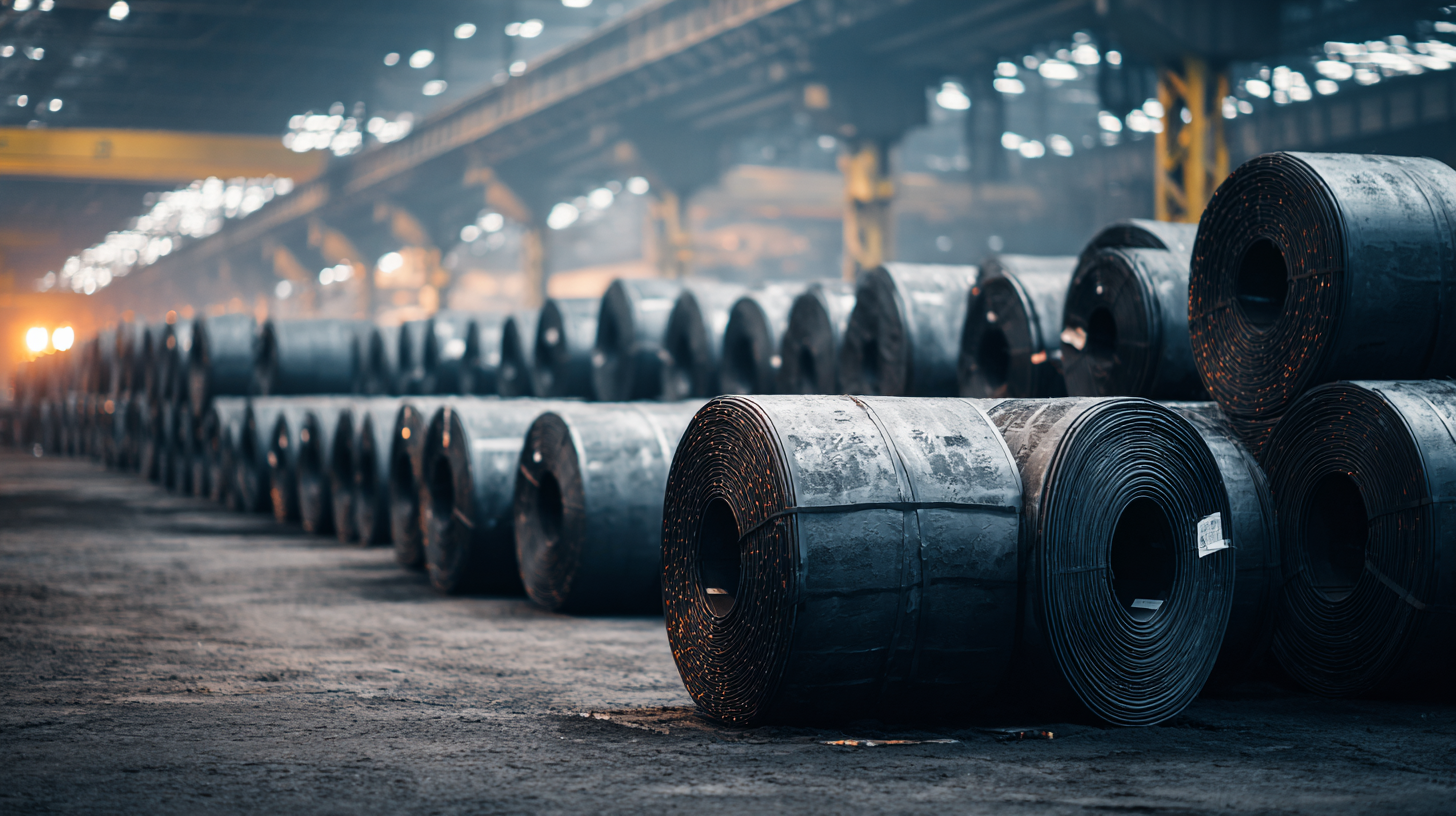 Cold rolled products have become increasingly significant in the steel market, influenced by various dynamics that dictate their pricing trends and demand fluctuations. Recent market analysis indicates a shift in profitability for steel mills, particularly following the peak profit levels experienced in 2021. The persistent high costs of raw materials have contributed to these declining profit margins, leading to a situation where low profit levels for hot-rolled coils could become a regular feature of the industry landscape.
Cold rolled products have become increasingly significant in the steel market, influenced by various dynamics that dictate their pricing trends and demand fluctuations. Recent market analysis indicates a shift in profitability for steel mills, particularly following the peak profit levels experienced in 2021. The persistent high costs of raw materials have contributed to these declining profit margins, leading to a situation where low profit levels for hot-rolled coils could become a regular feature of the industry landscape.
As observed, the demand for cold rolled coils is inextricably linked to broader economic conditions and fluctuations in pricing. Market participants must navigate challenges such as the rising costs of production against the backdrop of weakening prices. This interplay not only affects the pricing strategy of steel manufacturers but also influences overall demand dynamics, prompting a reevaluation of market positioning and operational efficiency within the steel industry. Understanding these trends is crucial for stakeholders aiming to adapt to the evolving landscape of cold rolled products.
The cold rolling process in the steel industry is undergoing significant technological innovations that enhance both quality and efficiency. Innovations such as advanced sensors and automation technologies have revolutionized the traditional cold rolling methods, allowing for finer tolerances and improved surface finishes. These advancements streamline production processes and reduce waste, which is particularly crucial in meeting global demand for high-quality steel products.
In contrast, short-process casting technology presents a compelling alternative to conventional hot rolling routes. By bypassing the hot rolling stage, this innovative approach not only reduces energy consumption but also minimizes material degradation that can occur during the heating phase. This method aligns with the steel industry’s push towards sustainability, addressing challenges such as the declining quality of iron ore, which has implications for green steel production. As the industry adapts to these technological shifts, the integration of AI tools further enhances operational efficiency, indicating a transformative era for steel manufacturing.

The production of cold rolled coils has significant environmental implications that the steel industry is gradually addressing. The energy-intensive process emits carbon dioxide and other pollutants, which contribute to climate change. However, many companies are now adopting sustainable practices to minimize their ecological footprint. For instance, implementing energy-efficient technologies during production can significantly reduce emissions and energy consumption. Additionally, utilizing recycled materials in manufacturing cold rolled coils not only conserves natural resources but also lessens waste in landfills.
Tips for sustainable practices: include regularly assessing your production methods to identify areas for improvement, such as energy consumption and waste management. Companies should also consider collaborating with industry partners to share best practices and innovations that promote sustainability. Engaging in training and workshops can ensure that employees are knowledgeable about eco-friendly techniques, leading to a more responsible production approach.
Moreover, understanding regulations related to environmental impacts is crucial. Keeping up with local and international standards can help companies avoid penalties and enhance their reputation. By prioritizing sustainability in cold rolled coil production, businesses can not only comply with regulations but also meet the rising consumer demand for environmentally friendly products.


